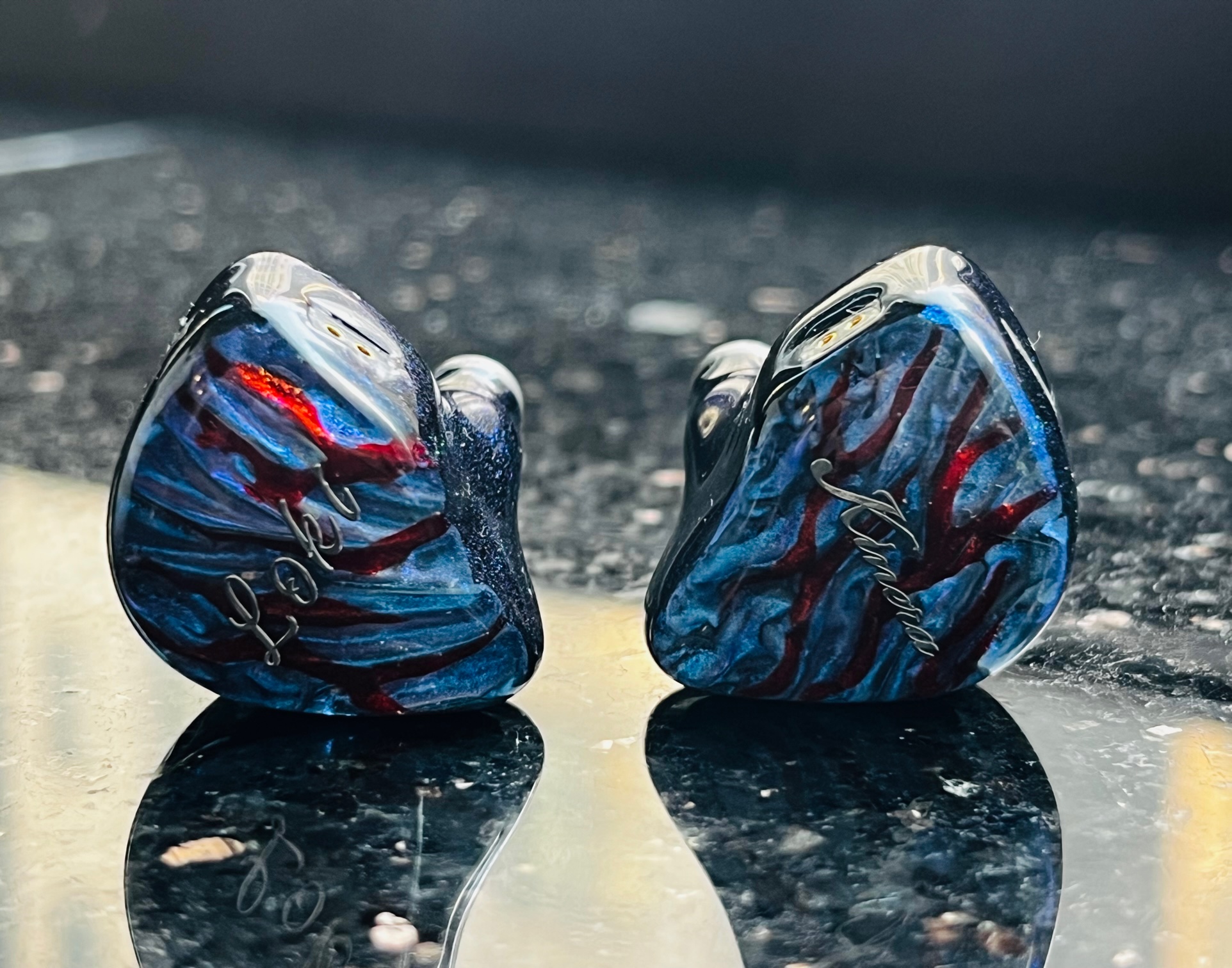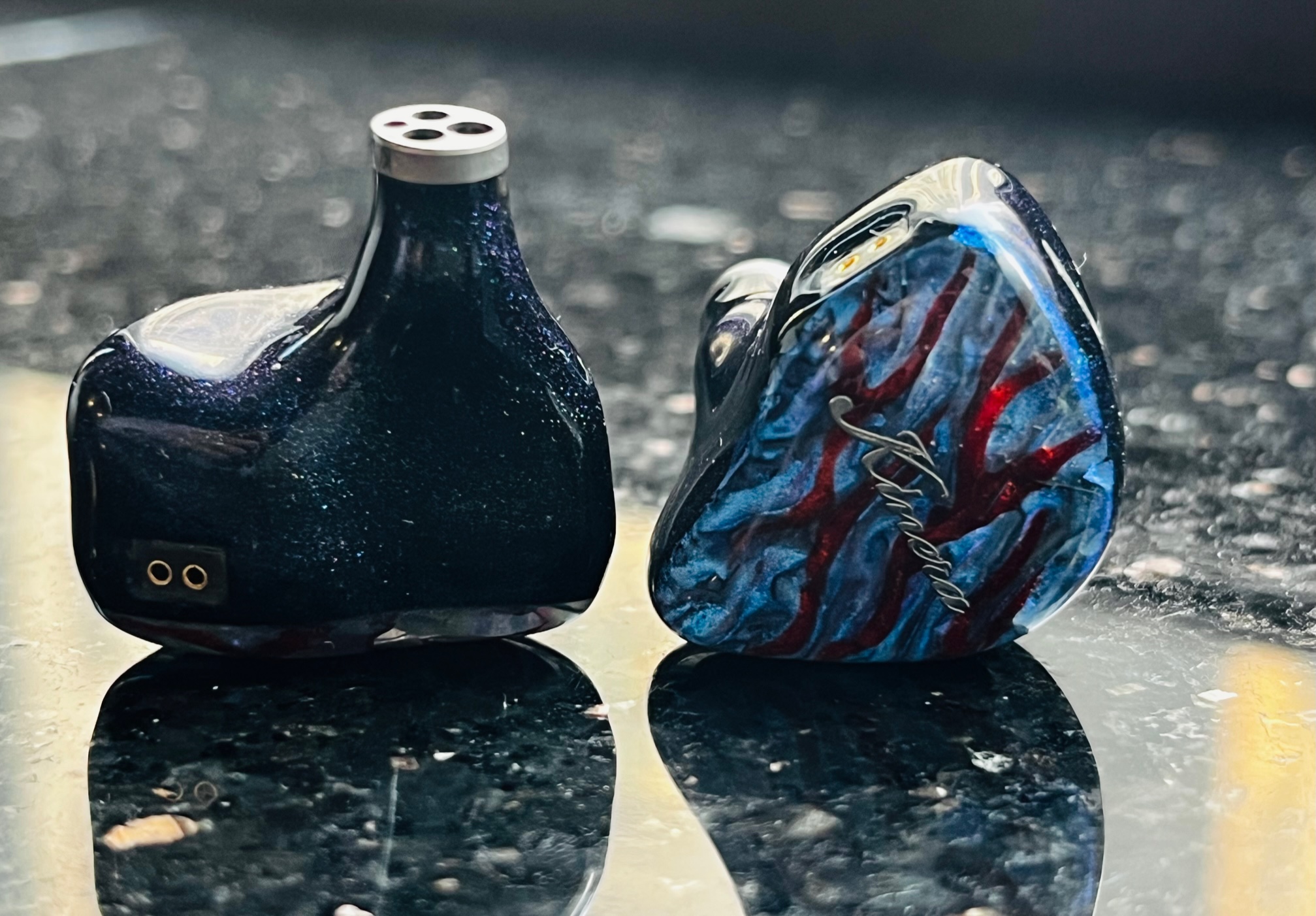Kinera Loki vs. Kinera Baldr 2.0 Comparison Review
We’ve been passing around Kinera‘s new flagship IEM the Loki here in the office for review, and yeah, we’re all pretty impressed, to say the least. But at $3100, its price tag is a leap and a bound away from Kinera’s now ex-flagship, the Baldr 2.0, which goes for $1400. So what’s up – thinking about throwing down extra for the Loki, but wondering if it’s really worth it over the Baldr 2.0? I like the way you think. We’ll be going over and comparing their fits, physical and technical designs, and most importantly, what they sound like. But first let’s take a look at what you get with each.
What’s in Their Boxes?
Kinera Imperial Loki

- One pair of Kinera Imperial Loki In-ear monitors
- One Effect Audio UP-OCC Cable, EA 4.4mm
- Final Type E Eartips x 5 sets (SS/S/M/L/LL)
- AZLA SednaEarfit Crystal Eartips x 3 sets (SS/MS/ML)
- Spinfit CP145 Eartips x 3 sets (S/M/L)
- Symbio F Foam Tips x 2sets (S/M)
- Genuine Leather Carry Case
- Cleaning Brush
- User Manual
- Other Literature
Kinera Baldr 2.0

- One pair of Kinera Imperial Baldr in-ear monitors.
- One 4 cores 6N OCC with gold plated cable with 4.4mm termination plug.
- Five pairs of Final Audio Type E ear tips.
- Six pairs ( RS-B45 & JH-FY009-B ) of Kinera Custom ear tips.
- Two pairs of Foam tips.
- Premium Storage Case.
- 4.4mm to 3.5mm & 2.5mm adapter.
- Cleaning Brush.
Look and Feel

Let’s start with the easy part: both the Loki and the Baldr 2.0 are beautiful in their own unique ways. The Baldr 2.0 may be the only IEM I’ve ever tried with wooden housing – oak, to be specific – and looks like an acoustic guitar molded into the shape of an IEM. The Loki has a bit more flash with its sparkly housing and marbled, red and blue faceplate.

Greater differences emerge when it comes to fit. While the Baldr 2.0 has what I’ll generalize as an “average” nozzle width, Kinera’s Loki has a beefy nozzle that measures 6mm in width. Some might prefer the fit on the Baldr for this reason alone, but I can’t say that it bothered me much. My personal IEMs also have a 6mm nozzle, so I’m already accustomed to this physical trait. Just pointing this part out for those with smaller ear canals – or for the sticklers.
Also worth noting is the fairly significant size difference between the two Kinera IEMs. The Loki is a chunker, while the Baldr 2.0 is somewhere between standard sized and large. Fair enough – the Loki is packing twelve drivers in each IEM while the Baldr 2.0 sees six. While the difference is definitely noticeable, I didn’t find the Loki’s size to detract from its comfort. Both IEMs feature ergonomic shapes and softly rounded edges that put them at minimal risk of straining a listener’s outer ears.
Lastly, it’s worth talking about the accessories that come with each. Both offer an impressive tip selection, but the Loki might have the most eclectic and unique ear tips I’ve ever seen. Of special note, for me personally at least, is the inclusion of Symbio Type F foams, which are a bit puffier and firmer than the more common Comply foam tips. We also see the unusual but welcome inclusion of two premium cables with 4.4mm balanced terminations on the Loki. While the Baldr 2.0 still has great accessories that won’t leave you feeling like you’re missing out, the Kinera Loki simply crushes it in this department.
Technical Design
For twice the price as the Baldr, Kinera’s giving us nearly twice as many drivers in the Loki. Of particular note is the inclusion of a bone conductor driver in the Loki that works together with its 6mm dynamic driver to amplify its bass and sub-bass frequencies. Bone conductor drivers bypass the ear drum and transmit vibrations through the bones in our inner ears, and are a somewhat rare and premium feature to see included in an IEM.

| Specs | Kinera Loki | Kinera Baldr 2.0 |
| Drivers | 1 DD, 6 BA, 4 EST, 1 Bone Conductor | 1 DD, 2 BA, 4 EST |
| Impedance | 12 ohms | 22 ohms |
| Frequency Response | 20 Hz – 50 kHz | 5 Hz – 50 kHz |

Sound Comparison
The main differences between the balances of the Baldr and the Loki lie in the extremes of their tunings. The Loki puts a lot of stock in its subs and mid bass, which supply impactful slams and rumbles. Though its low end is certainly one of its defining features, it avoids swallowing the signature thanks to a well balanced, more reserved high bass balance. This keeps its dominant low end well separated from its center frequencies and results in an awesome articulation in the midst of its bassy excitement. What I liked about the Loki’s low end even more than its bold amplitude was its extreme attention to detail, providing rich and precise layers within its bass – particularly its sub bass. Listening to sub dense albums – electronic or otherwise – was surprisingly revealing. Quieter low details are capable of peaking out of the folds of dense, throbbing mixes.
On the other side of things, the Loki has a very particular treble tuning. Low and mid treble see moderate amplification, but the star of the show here is the upper treble. Frequencies between 10 and 20 kHz find levels that aren’t exactly for most tunings. A couple of high treble-heavy IEMs have come out this year – specifically, Letschuoer’s Cadenza and ThieAudio’s Prestige. I would venture to add the Loki to that list, but clarify that it pulls off its wispy sizzle with a more natural and revealing quality.
Overall, the Loki is a very colorful IEM that adds exciting flourishes while keeping an eclectic character.
Though there are some similarities to be found with the Baldr 2.0, it’s quite apparently approaching things from a different angle. While it’s colorful in its own way, it exhibits something a little closer to a balanced response than the Loki. It’s a little bassy, and certainly bassier than the original Baldr, but its low end boost is more subtle than what’s heard on the Loki. It brings some satisfying substance to listens, but doesn’t demand to present itself as a foreground component. Like the Loki, high bass and low mids find more natural levels while most of the erngy comes from mid bass and subs.
The Baldr sees a little more of a conventional treble tuning – high treble isn’t nearly as prominent as it is on the Loki. Instead, my attention was brought to it’s fairly bold mid treble. This brought a level of intensity to the rattle on snare drums, and an extra intensity to guitar harmonics and vocal fry. On less intense mixes, like singer-songwriter acoustic arrangments, I was appreciative of the lifting quality this tuning could have. However, listening to more treble heavy music with feminine singers and twangy electric guitars, such as Cocteau Twins or The Sundays, this mid treble could sometimes take things too far and run the risk of being harsh.
But in a nutshell, the Loki is going for a more colorful tuning that brings out details by any means necessary, while the Baldr is in more of a balanced camp with idiosyncratic touches peppered in.
Overall
I find the Loki to be in an entirely different league from the Baldr 2.0 – and at more than twice the price, it should be. While the Baldr strikes me as a solid choice for its price point, the Loki had me listening with enthusiasm, eagerly throwing my favorite songs at it just to see what it would do with them. People may have been surprised when Kinera announced a $3100 flagship IEM, as its an unprecedented price tier from the company. But I feel confident in saying that the Loki is Kinera’s ace-in-the-hole, and worthy of the top shelf upon which it finds itself.
You can order the Kinera Loki here from Audio46.
MAJORHIFI may receive commissions from retail offers.








